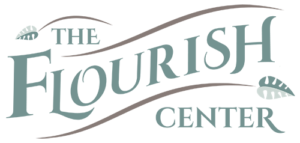Written by our Integrative Medicine Nurse Practitioner, Jen Owen
Every year at springtime, I’m asked a lot of questions about detoxing. I, myself, have tried just about everything there is for cleansing the body: complete fasting, juice fasting, supplement regimens, cleanses, etc.
The main thing I’ve learned from all of this and from working with people who have tried the same, is that 99% of the time, the body will detox itself, if you allow it to. One of the main ways our bodies detox is from a powerful antioxidant called glutathione.
Glutathione is constantly being produced and can be found in almost every cell in a healthy individual.The highest levels are found in the liver, making it very important in detoxification. Levels of production are reduced by pollution, stress, foods that cause inflammation, toxins, medications, radiation, aging, etc.
Glutathione acts very similarly to a sticky bug tape, going through the blood stream and sticking to toxins, viruses, and even heavy metals. It is normally recycled and reused. When the toxic load becomes too great, glutathione production and recycling decreases.
When we can no longer detox properly, we become sick. Low glutathione levels have been found in chronic infections, chronic fatigue syndrome, cancer, autoimmune disease, heart disease, diabetes, Alzheimer’s disease, asthma, Parkinson’s disease, liver disease, kidney issues, and much more. Glutathione is very important for the proper functioning of the immune system and for keeping every cell in the body healthy.
Tthere are many ways you can change your way of living to positively affect this detox process. One of the most obvious and most often ignored ways is exercise. Exercise increases your glutathione levels, which will increase your detoxification and immune system actions. Be sure you are getting cardiovascular exercise, such as fast walking, jogging, aerobics. Start with 5-10 minutes per day and work up to 30 minutes daily for optimal health.
The next obvious, but often ignored way to increase your glutathione levels, is eating supportive foods and the rainbow diet. Processed foods, fast foods, factory-farmed meat and dairy often contain preservatives and other chemicals that increase the burden on the detoxifying mechanisms in our bodies.
This leads to more work and eventually less glutathione production. Sulfur-containing foods, such as onions, garlic, and cruciferous vegetables (broccoli, kale, cauliflower, cabbage, collards, etc.) actually increase your glutathione production, so be sure to eat some of these every day, if they you tolerate them well.
The other way to increase glutathione levels is by using supplements. There are several that can be added, including liposomal glutathione, N-acetyl cysteine, selenium, vitamins B6, B12, C, and E, alpha lipoic acid, and more. I usually wait to add supplements until I am sure the person is exercising and eating the rainbow. The only way to fix problems for good is to fix the reasons they got there in the first place, which is often from eating less ideal foods and lack of exercise.
I think we can all agree on that, right?
So, if you are thinking of trying one of the oh-so-popular detoxes or cleanses out there for “spring cleaning”, first examine your day-to-day habits.
Are you eating the most optimal foods possible for your body?
Are you getting your blood pumping on a daily basis?
If not, save your money and start there!
You’ll be amazed at how much better you feel, how much better you sleep, and how much your life will improve when you care for yourself daily through excellent food and movement!
What are your thoughts about all of this? I would love to hear from you in the comment section below and please share this article with your friends!
And if you need extra help, I’m here for you. Schedule an appointment with me here.


This article is refreshing because most doctors are trying to prescribe some kind of medicine to you. I love the promotion of the rainbow diet, exercise and allowing the body to do its natural cleansing. Thank you.